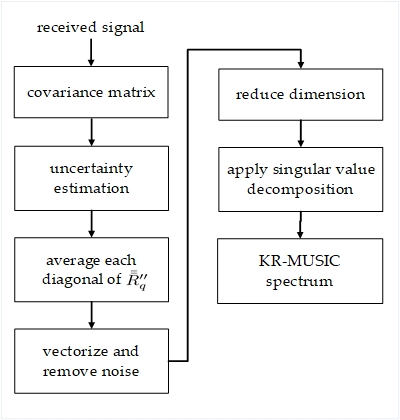
When we use antenna array to estimate the direction-of-arrival (DOA) of received signals, the uncertainty of gain and phase in the antennas will degrade the estimation accuracy. However, the calibration is time-consuming, and it is infeasible to calibrate frequently. To evaluate DOA under partly-calibrated antenna array is an inevitable problem. With a uniform linear array of N antennas, previous work could only accurately estimate (2N-2) sensors. In this work, we utilized the special structure of the covariance matrix from received signals to estimate the uncertainty of gain and phase. Then, we vectorized covariance matrices of several observed time frames and stacked them into a matrix, so the Khatri-Rao subspace was formulated. Finally, we applied traditional MUltiple SIgnal Classification (MUSIC) on the above-mentioned matrix, and thus the estimated DOAs had a smaller error.
The contribution of this work comes in two aspects:
- The gain and phase uncertainty in partly-calibrated ULA are correctly estimated
- The DOFs of ULA with N sensors are increased from (2N-2) to (2N-1)

PUBLICATION:
K.-C. Hsu and J.-F. Kiang, ‘‘DOA estimation of quasi-stationary signals using a partly-calibrated uniform linear array with fewer sensors than sources,’’ Progress In Electromagnetics Research M (PIER M), vol. 63, pp. 185-193, Jan. 2018.